Blue shades through turquoise into green. Much as blue shades an infinite number so too does grass as a simple study of the lawn shows. How do you study grass? I recommend a sunny afternoon, lying down listening to the life in grass, studying the scents and listening to the sounds of the birds, bees, and other bugs. A mown lawn is not as good as an unmown lawn, especially one that is long overdue a cut. None are as good as a piece of uncultivated, undisturbed, meadow land, if you can find any these days.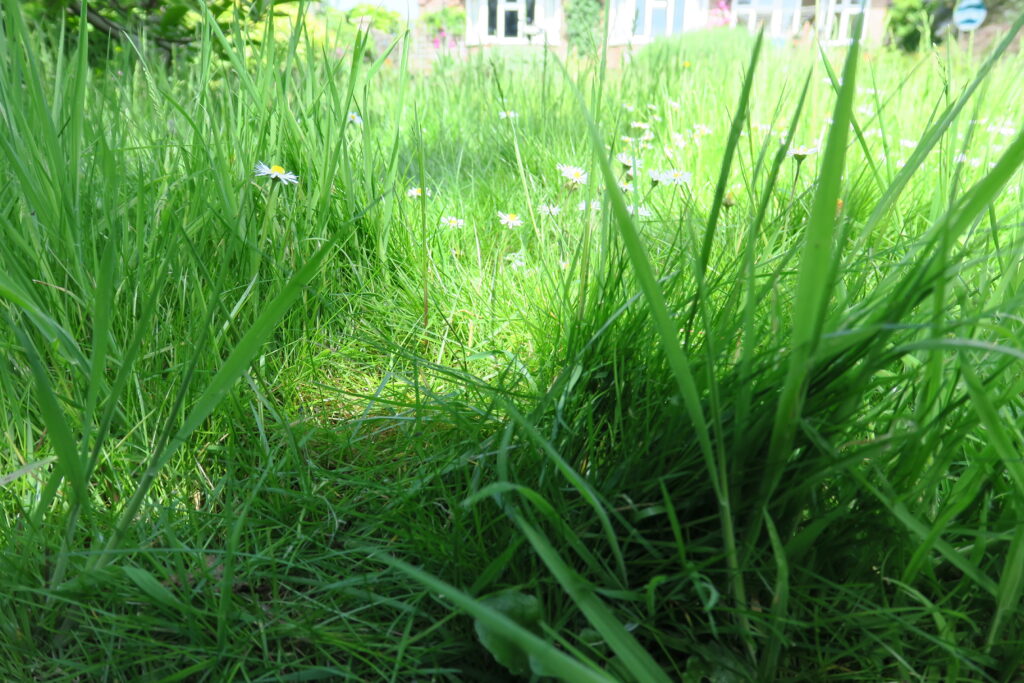
Of course, you can also take along pencils, sketch book etc., but I find it sharpens my looking just as much to compose images in the camera. Although I do both I’m not quite over the rusting Cuckmere sea defences yet to want to switch to the garden again, nor are there enough meadows around me. Too much is meddled with by farmers and those interfering nature reserve people who all want to cultivate to meet their own agendas, messing with nature, planting crops or seeding with ‘wildflower seed’ that may or may not have grown on the local soil type.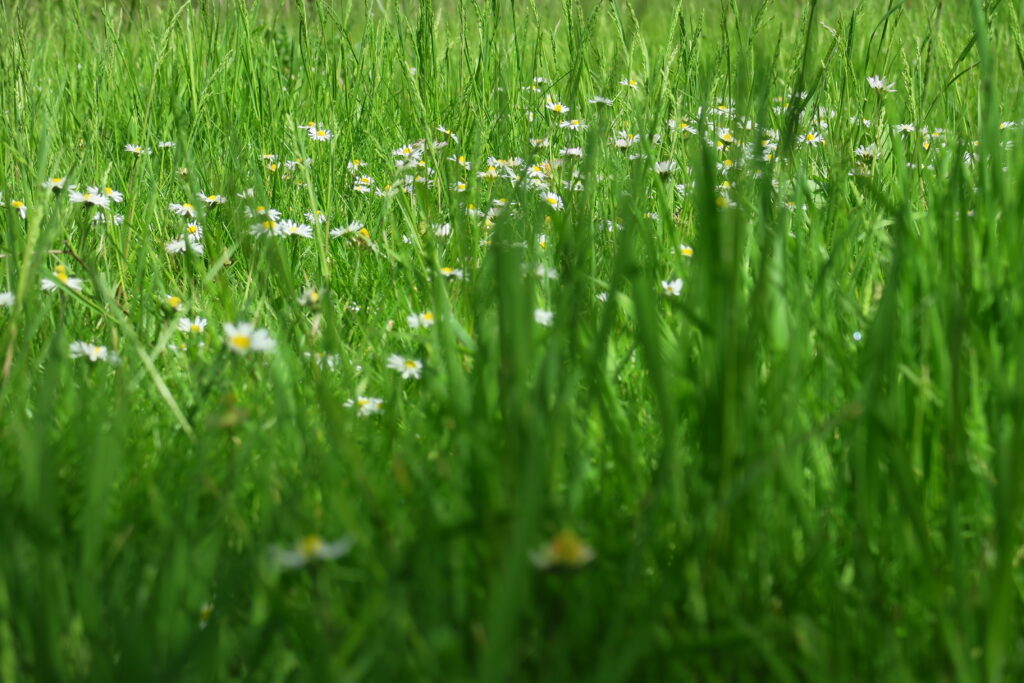
Fortunately, a combination of adopting ‘no mow May’ and my own spinal problems means my lawn hasn’t seen any attempt to cut it for 6 weeks since the 8th April (as I write it is 20th May), creating my own small meadow. Grass may not be as high as an elephant’s eye, but is reaching on upwards, right up to the sky…but the last time I saw grass up to an elephant’s eye was in Okavango…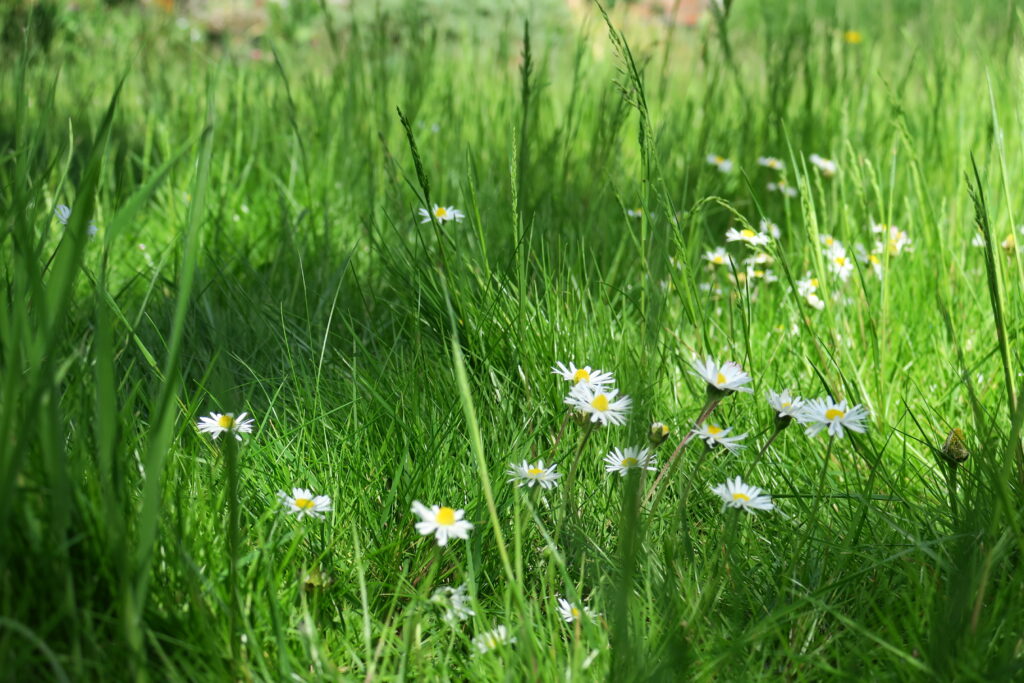
Glorying in this growth of garden grasses is the English daisy, quite one of my favourite flowers. I have featured this little flower the “uncultivated innocence of the native English ox-eye daisy (bellis perennis) with its white petals frequently edged in a strong pink or red” in a number of paintings, including the ‘Brexit Daisy’, now in a private collection. I think there is a strong case for making it our national flower rather than the rose. It is sturdy and appears in the most unlikely places, but is widespread and tough, withstanding mowing and equally growing tall amongst the taller grasses where there is no mowing.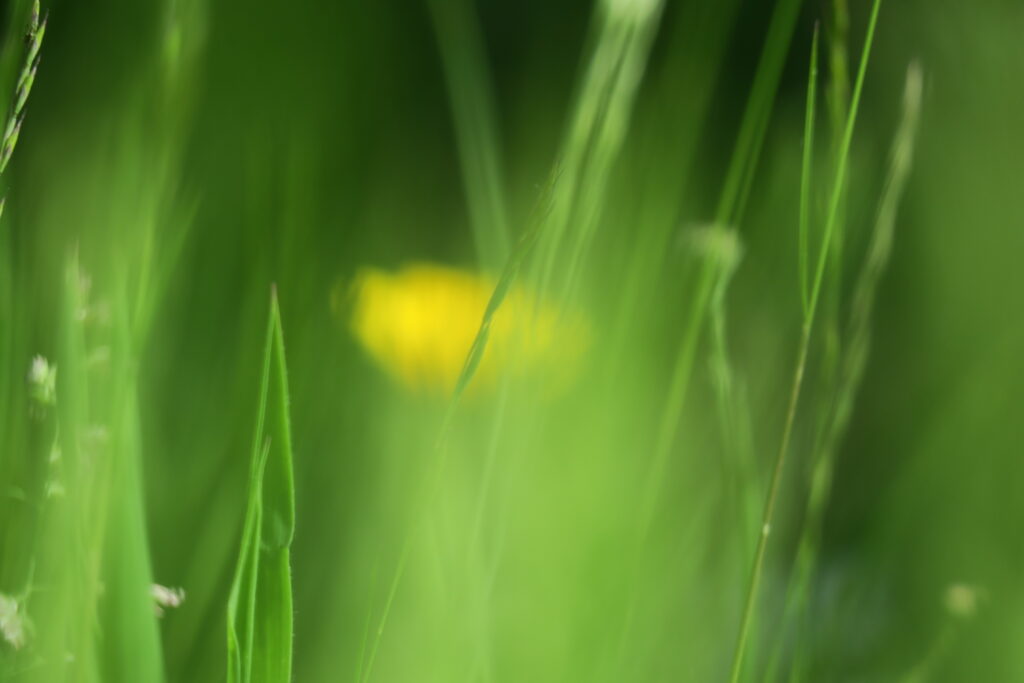
The grass, of course, is the definition of greenness. My 1954 Dictionary again ‘Old English: grĕne, of colour between, or compounded of, yellow and blue, often defined by prefixing as grass-green, apple-green, olive-green, with or without hyphen and so on…. Verdure…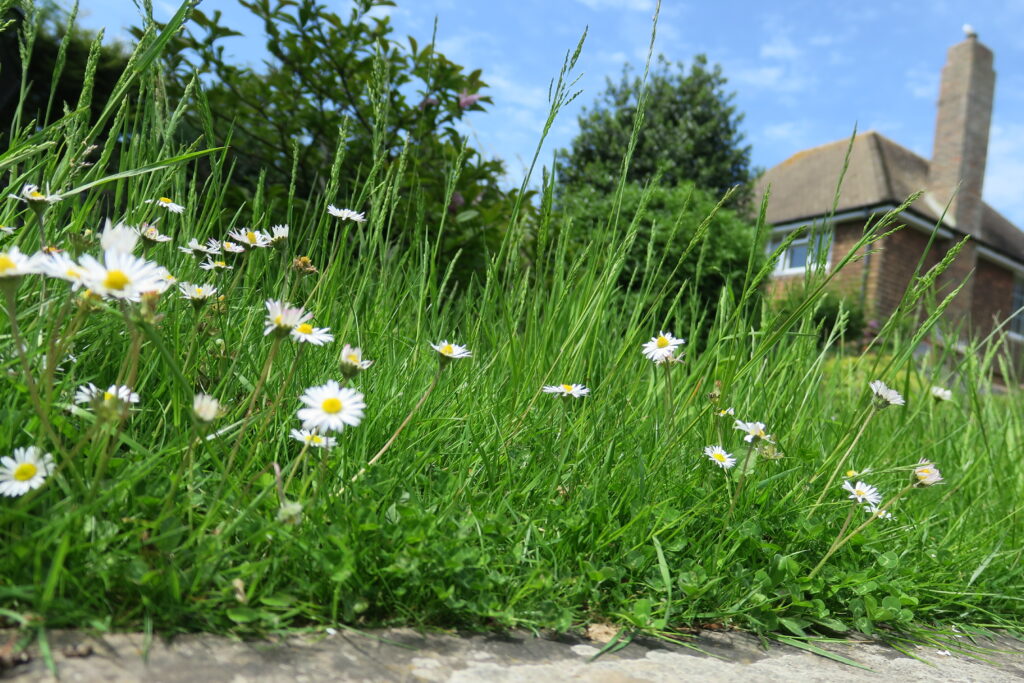
Green is the dominant colour in the garden against which flower blossom glow, but the daisies, scattered in the long grasses hold their own in this beauty contest, the gold of the Archimedean spiral at their centres sitting among white petals that often turn to pink darkening to red at their tips. They have grown tall in competition with the grasses, thriving in competition, and the grasses themselves have started to become identifiable as they mature to generate seed heads. The biggest shock seems to me to be the inability of the dandelions to compete in this new muscular grassland.
I argue with OH about letting it grow more, but of course I am losing. “Wait” I plead, “until I can mow it myself”. Alas it is not to be, my fitness won’t be ready for another two or three weeks of the spine melding back together. Soon hired mercenaries will be in, tooled up to cut it all down to size.
Watch the daily weather image on twitter to see the garden change, revert. But the daisies will return. They always do, bless’em.

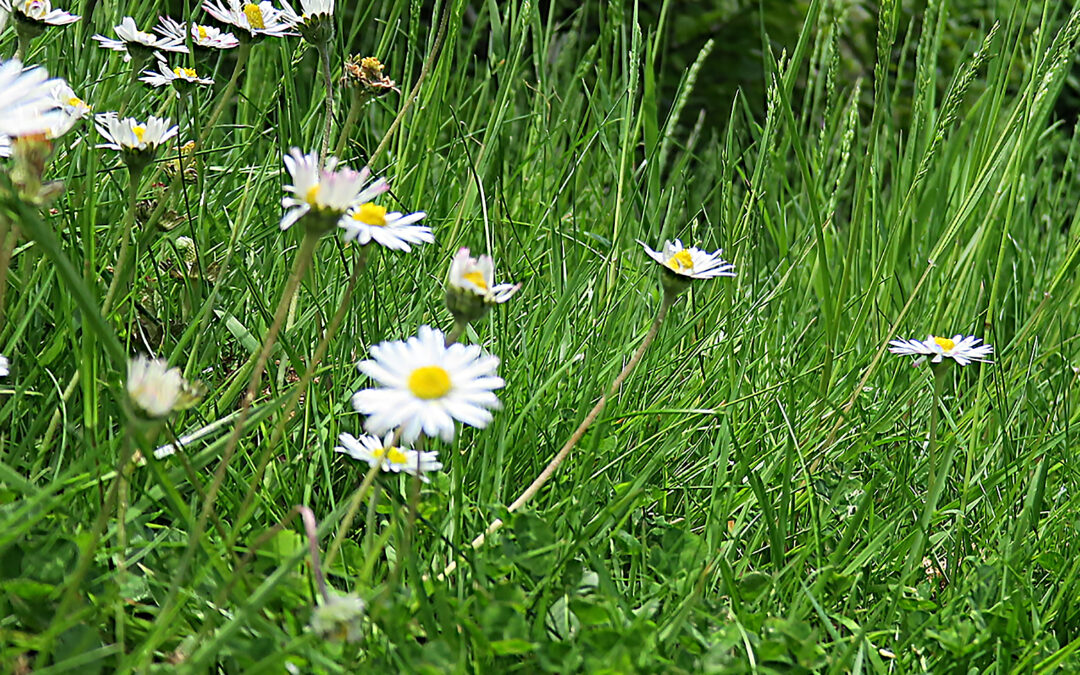
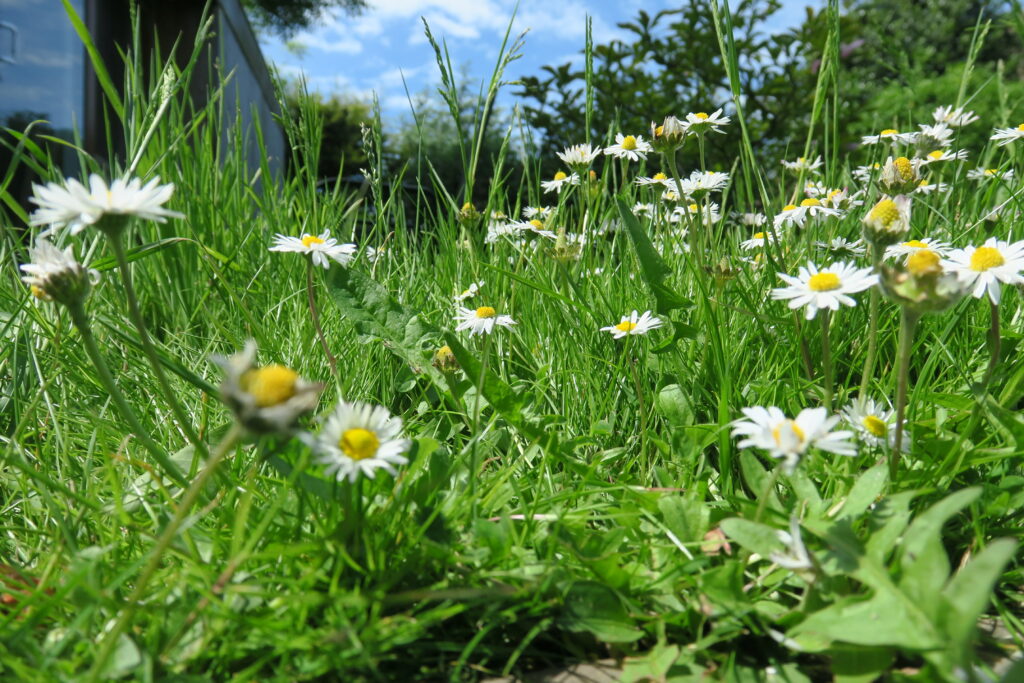
Recent Comments